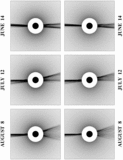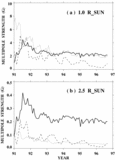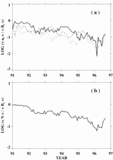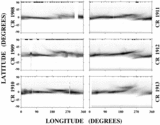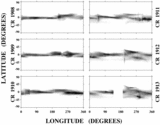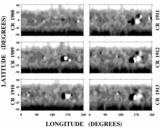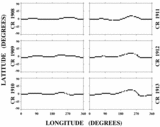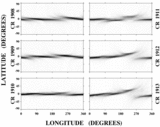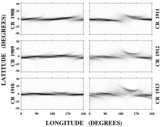Image Details
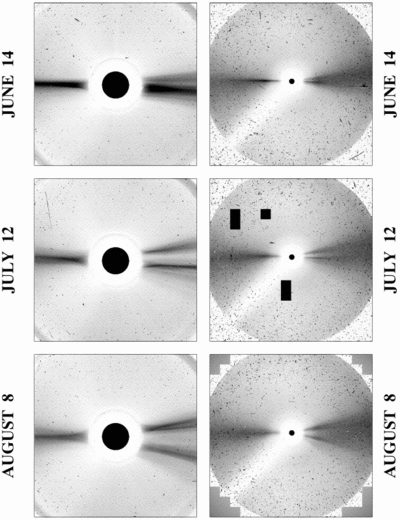
Caption: Fig. 1.
Rotation‐by‐rotation evolution of coronal streamers in polarized light, 1996 June to August. Left: LASCO C2 images (2–6 R☉). Right: LASCO C3 images (3.7–32 R☉). Each image was constructed from three near‐simultaneous observations employing the −60°, 0°, and +60° polarizers in combination with the orange filter (band‐pass 540–640 nm). The intensities Ipol have been scaled by a factor of R2, where R is the apparent distance from the center of the occulting disk. The regions of highest (lowest) intensity are shown as black (white). Black circles indicate the size of the solar disk. (Most of the little specks and streaks in these polarized images are produced by cosmic rays. The small dots with horizontal bars through them are planets, which cause localized saturation or "bleeding" in the CCD; thus Venus appears near the right edge of the June 14 C3 image, while Mercury can be seen to the northeast of the C3 occulting disk on July 12.)
Copyright and Terms & Conditions
© 1997. The American Astronomical Society. All rights reserved. Printed in U.S.A.


